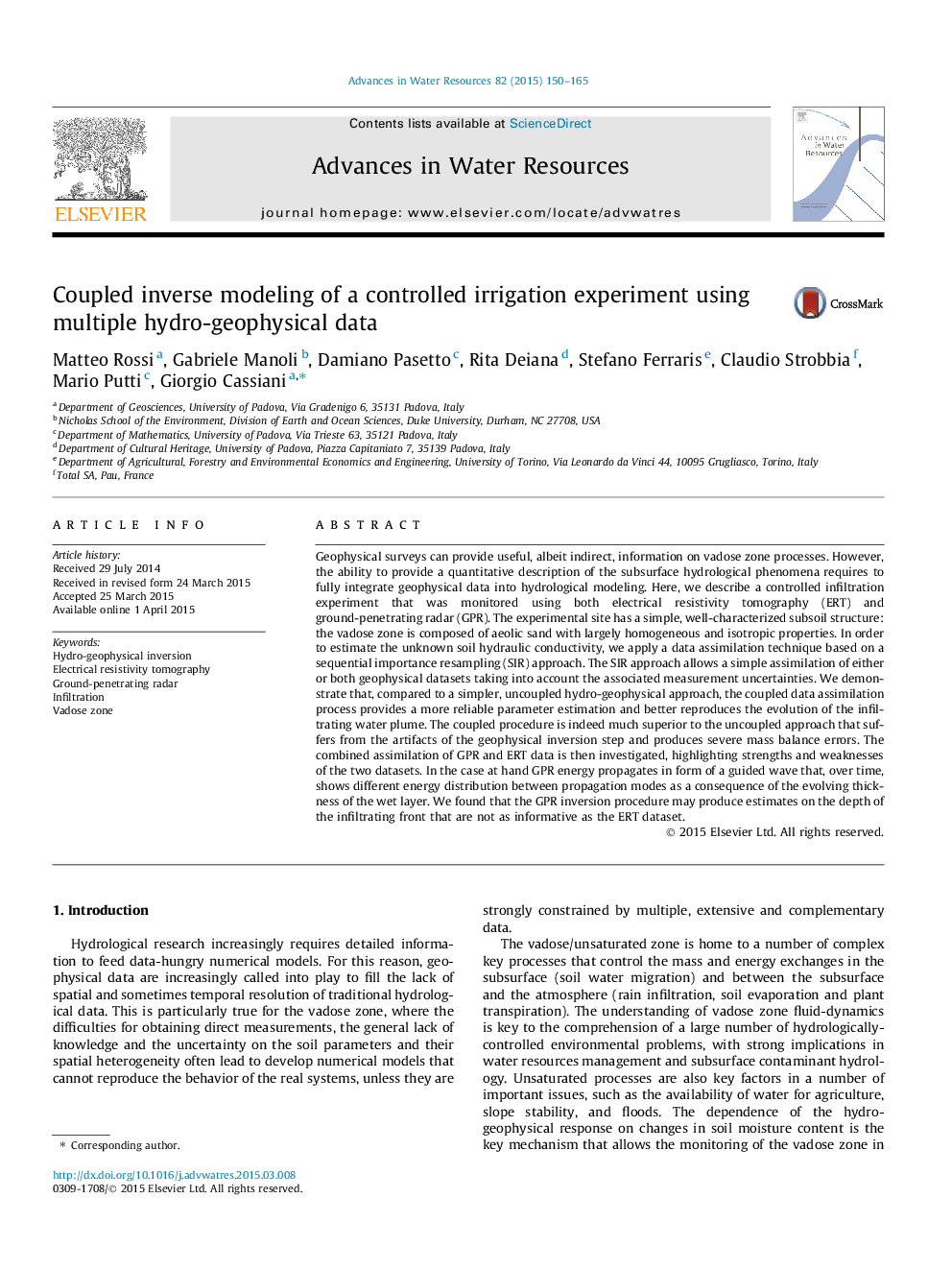| کد مقاله | کد نشریه | سال انتشار | مقاله انگلیسی | نسخه تمام متن |
|---|---|---|---|---|
| 4525384 | 1625627 | 2015 | 16 صفحه PDF | دانلود رایگان |
• An irrigation experiment is monitored using time-lapse multi-offset GPR and ERT.
• GPR guided wave data are inverted to produce depth of the infiltration front.
• We implemented a Data Assimilation procedure based on Richards’ equation modelling.
• Both ERT and GPR data are assimilated to give a best estimate of hydraulic parameters.
Geophysical surveys can provide useful, albeit indirect, information on vadose zone processes. However, the ability to provide a quantitative description of the subsurface hydrological phenomena requires to fully integrate geophysical data into hydrological modeling. Here, we describe a controlled infiltration experiment that was monitored using both electrical resistivity tomography (ERT) and ground-penetrating radar (GPR). The experimental site has a simple, well-characterized subsoil structure: the vadose zone is composed of aeolic sand with largely homogeneous and isotropic properties. In order to estimate the unknown soil hydraulic conductivity, we apply a data assimilation technique based on a sequential importance resampling (SIR) approach. The SIR approach allows a simple assimilation of either or both geophysical datasets taking into account the associated measurement uncertainties. We demonstrate that, compared to a simpler, uncoupled hydro-geophysical approach, the coupled data assimilation process provides a more reliable parameter estimation and better reproduces the evolution of the infiltrating water plume. The coupled procedure is indeed much superior to the uncoupled approach that suffers from the artifacts of the geophysical inversion step and produces severe mass balance errors. The combined assimilation of GPR and ERT data is then investigated, highlighting strengths and weaknesses of the two datasets. In the case at hand GPR energy propagates in form of a guided wave that, over time, shows different energy distribution between propagation modes as a consequence of the evolving thickness of the wet layer. We found that the GPR inversion procedure may produce estimates on the depth of the infiltrating front that are not as informative as the ERT dataset.
Journal: Advances in Water Resources - Volume 82, August 2015, Pages 150–165
